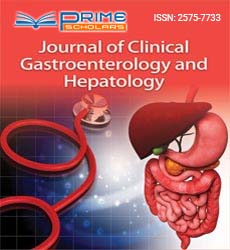Commentary - (2023) Volume 7, Issue 6
Navigating the Challenges of Gastrointestinal Bleeding: Understanding Causes, Symptoms, and Treatment
Guliver Martin*
Department of Biological Science, Peking University, China
*Correspondence:
Guliver Martin,
Department of Biological Science, Peking University,
China,
Email:
Received: 29-Nov-2023, Manuscript No. IPJCGH-24-18974;
Editor assigned: 01-Dec-2023, Pre QC No. IPJCGH-24-18974 (PQ);
Reviewed: 15-Dec-2023, QC No. IPJCGH-24-18974;
Revised: 20-Dec-2023, Manuscript No. IPJCGH-24-18974 (R);
Published:
27-Dec-2023, DOI: 10.36648/2575-7733.7.6.54
Description
Gastrointestinal bleeding is a serious medical condition
characterized by bleeding within the digestive tract. This
condition can range from mild to life-threatening, necessitating
prompt diagnosis and intervention. Understanding the
causes, symptoms, and treatment options for gastrointestinal
bleeding is crucial for healthcare professionals and the general
public alike. Gastrointestinal bleeding can arise from various
sources within the digestive tract. Peptic ulcers, erosive
gastritis, and esophageal varices are common causes of upper
gastrointestinal bleeding. In contrast, diverticulosis, colorectal
polyps, and inflammatory bowel diseases such as Crohn’s
disease and ulcerative colitis are frequently implicated in lower
gastrointestinal bleeding. Trauma, vascular malformations, and
certain medications like nonsteroidal anti-inflammatory drugs
can also contribute to bleeding episodes. The presentation of
gastrointestinal bleeding can vary depending on the location
and severity of the bleed. Upper gastrointestinal bleeding
often manifests as melena (black, tarry stools), hematemesis
vomiting blood, and symptoms of anemia such as fatigue
and weakness. Lower gastrointestinal bleeding, on the other
hand, may present with bright red or maroon-colored blood
in the stool, abdominal pain, and changes in bowel habits.
In severe cases, individuals may experience symptoms of
shock, including rapid heart rate and low blood pressure.
Diagnosing the cause of gastrointestinal bleeding involves a
combination of clinical evaluation, medical history review,
and various diagnostic tests. Endoscopic procedures, such as
esophagogastroduodenoscopy and colonoscopy, play a crucial
role in identifying and treating bleeding lesions. Imaging
studies, such as angiography and capsule endoscopy, may be
employed to locate the source of bleeding when endoscopy is
inconclusive. The approach to treating gastrointestinal bleeding
depends on the underlying cause and severity of the condition.
In cases of upper gastrointestinal bleeding, endoscopic
interventions, such as band ligation or injection therapy, may
be employed to stop bleeding from ulcers or varices. In lower
gastrointestinal bleeding, colonoscopic interventions and, in
some cases, surgery may be necessary to address the source
of bleeding. Supportive measures, including blood transfusions
and medications to stabilize blood clotting, are often employed
to manage the associated symptoms and complications.
The management of gastrointestinal bleeding poses several
challenges, particularly in cases of recurrent bleeding or when
the cause is difficult to identify. Patients with severe bleeding
may require intensive care, and the risk of complications such
as infections and organ failure necessitates a multidisciplinary
approach involving gastroenterologists, surgeons, and critical
care specialists. Preventing gastrointestinal bleeding involves
addressing underlying risk factors and adopting lifestyle
modifications. Avoiding the use of, managing stress, and
implementing dietary changes to promote digestive health
are essential preventive measures. Regular screening for
colorectal cancer and surveillance of individuals at high risk
for gastrointestinal bleeding, such as those with chronic liver
disease, can also contribute to early detection and intervention.
Gastrointestinal bleeding is a complex medical condition
that requires prompt recognition and intervention. As our
understanding of the causes and treatment options continues
to evolve, healthcare professionals can tailor approaches to
individual patients, improving outcomes and reducing the
burden of this potentially life-threatening condition. Public
awareness, early detection, and advancements in medical
technology all play crucial roles in the ongoing effort to navigate
the challenges posed by gastrointestinal bleeding and enhance
patient care.
Acknowledgement
None.
Conflict Of Interest
The authors declare that they have no conflict of interest.
Citation: Martin G (2023) Navigating the Challenges of Gastrointestinal Bleeding: Understanding Causes, Symptoms, and Treatment.
J Clin Gastroenterol Hepatol. 7:54.
Copyright: © 2023 Martin G. This is an open-access article distributed under the terms of the Creative Commons Attribution
License, which permits unrestricted use, distribution, and reproduction in any medium, provided the original author and source
are credited.

